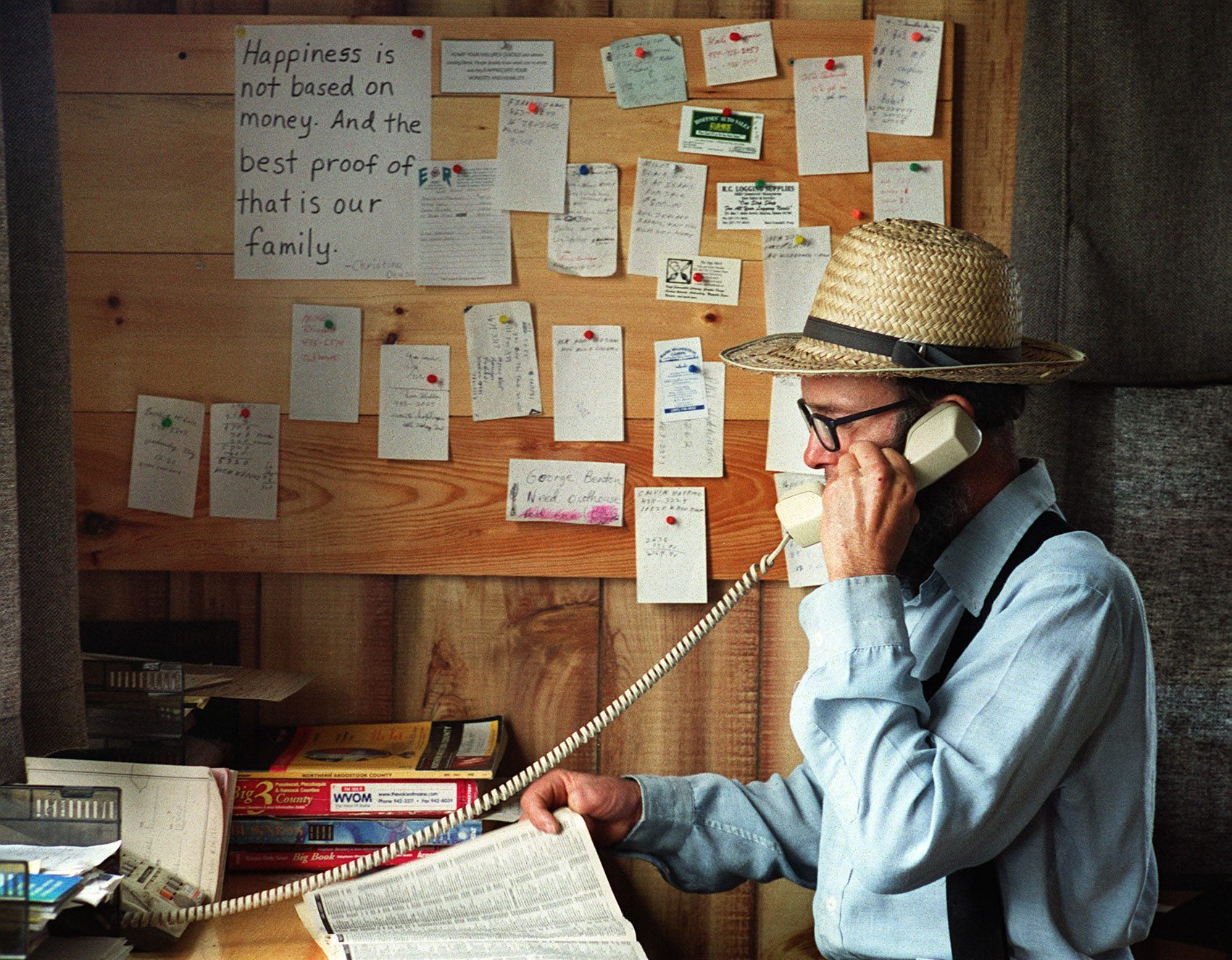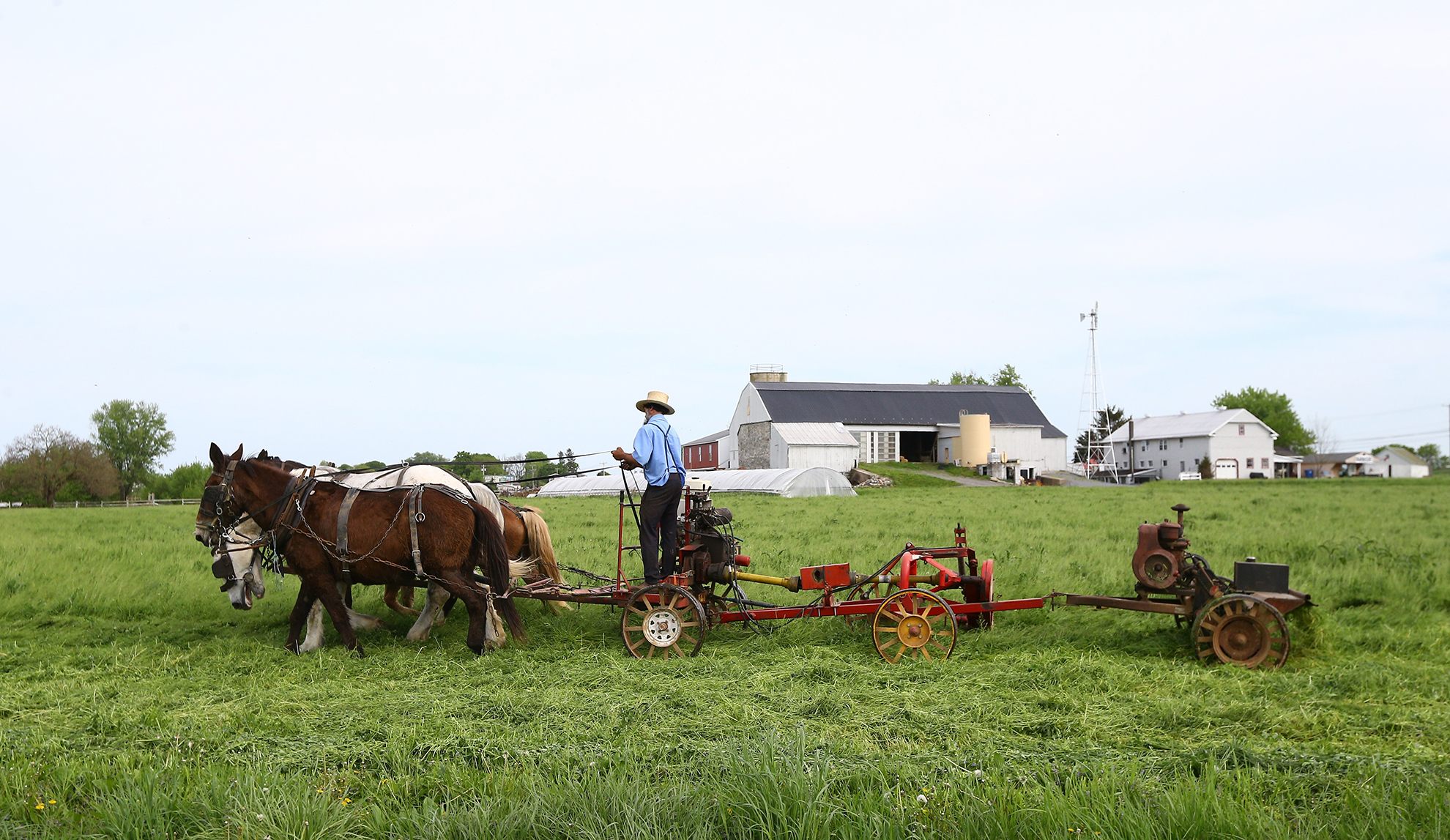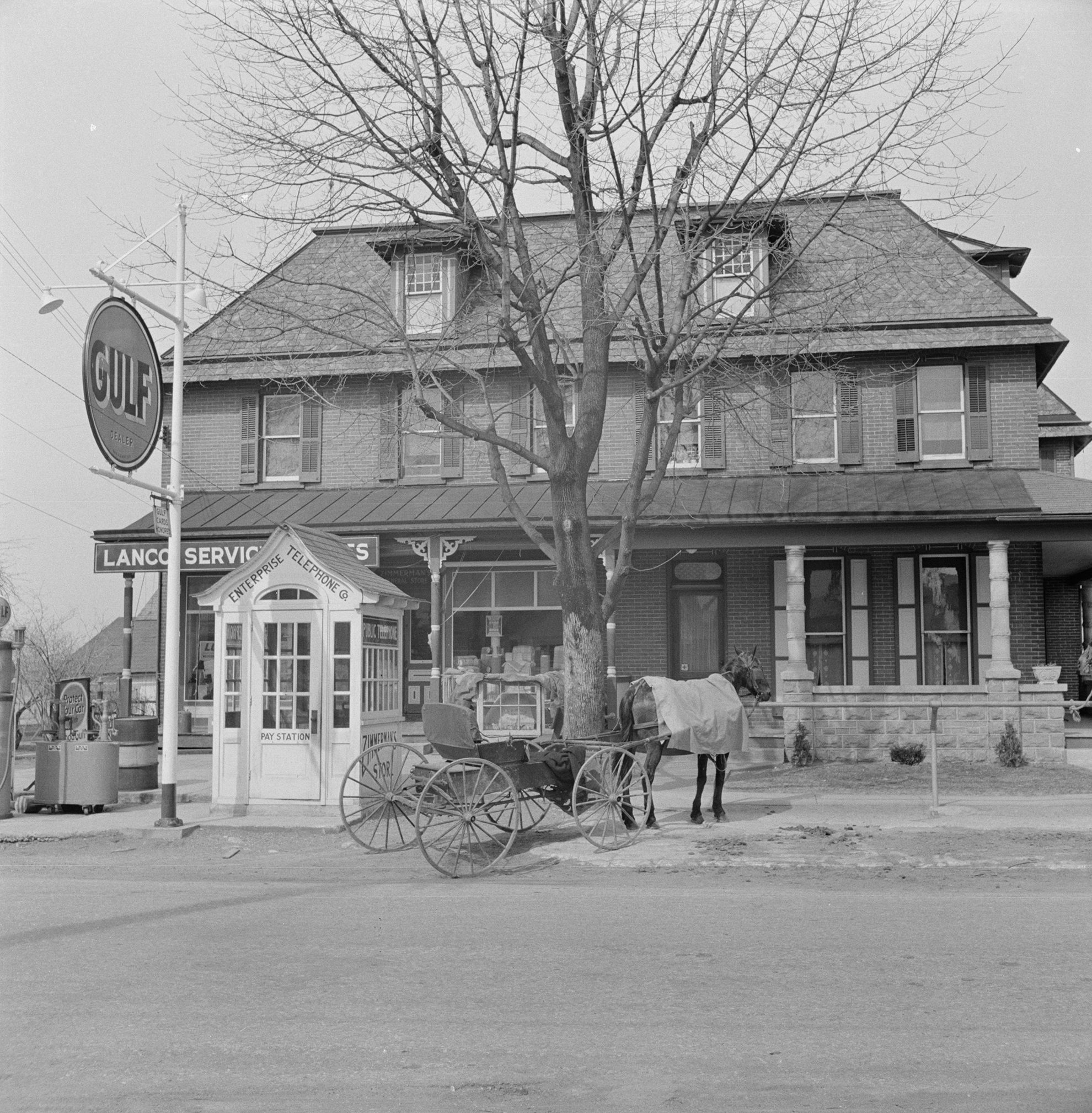A Hopping Hotline Brings the Amish and Mennonites Together
The dial-in conferencing service is a popular hub for theology chat and tractor-related recommendations.

The voice on the opening recording is so cheerful it could be a representative from the tourism board of some perpetually sunny Caribbean island.
“Welcome to the Amish and Mennonite Conference Line! Use it for God’s glory!”
The Line is a conference room-via-phone for speakers of Pennsylvania Dutch, a dialect of German brought to the United States by European immigrants beginning in the late 17th century and preserved today almost entirely by the Amish and Mennonites in the United States and Ontario, Canada.
Founded in early 2006, the Conference Line is the brainchild of then-38-year-old Gary, an Amish Mennonite man who asked to be identified in this story only by his first name. When Gary serendipitously “met” two other Anabaptist men on Soapbox, a now-defunct conferencing service he dialed into to socialize on occasion, the trio came up with the idea for having a conference call once a week for Plain people—an umbrella term for Amish and conservative Mennonites, referring to their simple, monochromatic uniform. The call would focus on their shared Anabaptist history, which Gary said would be “common ground” for members of different church denominations. (The Amish and Mennonite faiths are both Anabaptist traditions with their origins in the Radical Reformation of the 16th century, but the Amish, a breakaway sect founded by Jakob Ammann in 1693, worship in members’ homes rather than church buildings and have beards, to name a few distinctions. Today, Amish and Old Order Mennonite groups share some cultural similarities, like dress and language, but don’t interact much.)

What Gary says started “as a hobby and as a service to the people” soon became his full-time job. The Line now operates 24 hours a day, 6.5 days a week (they’re closed Saturday night and Sunday morning, to encourage people to be properly rested for church on Sunday), and can connect more than 9,000 callers comfortably; more than 10,000 unique phone numbers have registered for “talk passwords”—unique PINs they key in to chat—and many more people have dialed in just to listen. The Line is “largely self-operating,” and conversation usually flows naturally and politely, though Gary or a designated moderator has had to step in on the rare occasion when a “nuisance caller” starts kicking up trouble or people begin talking over each other. In the beginning, Gary advertised the Line in The Budget, an Ohio-based newspaper with a large Amish and Mennonite readership, but knowledge has mostly spread via word of mouth since, to great effect.
“Historians tell me that never before in history has something pulled different denominations together like the conference line,” he says, while clarifying that a majority of the participants are Old Order, or “horse and buggy,” Mennonites. There are exceptions: in 2007, after the school shooting in the Old Order Amish community of Nickel Mines, Pennsylvania, over 1,000 listeners, many of them were members of Old Order churches, tuned in for real-time updates on the tragedy.

These days, thankfully, the conversation is usually more prosaic. People are free to discuss anything they wish as long as it doesn’t go against the rules; callers talk “quite frequently about tractors, combines, farming practices,” Gary says. “Any topic that a group of people would talk about when they’re sitting in their living room.” The Line also has a news dispatch six days a week (three nights in Pennsylvania Dutch and the other three in English), discussions of history and theology (sample topic: “Jewish Culture in the Time of Christ”), people giving talks about vacations they’ve recently taken or natural disasters they’ve survived (in 2006, a man described a series of tornados he’d recently endured in Pennsylvania just as a tornado siren in Missouri sounded on the line), and hosts the occasional game of checkers or Connect Four on separate-but-connected lines that operate kind of like sub-Reddits. Sometimes, families or church groups perform hymnals for a rapt audience of callers; on January 17, 2019, 2520 people called in to hear a family from Indiana sing, which is the record number of people to be connected at one time.
When I dialed in early one Thursday, I first listened to the upbeat woman on the recording go through the Conference Line rules: polite, clean language; no proselytizing or “sheep stealing” (attempting to poach members of another church); and no “boy and girl visiting on the line” (basically, using the line as a way to chat before formal courtship is sanctioned). There is also no playing of musical instruments, as Amish and Mennonites believe that mastering an instrument might make the player feel a sense of personal pride, which could dissuade them from yielding to the collective body. Most importantly, she implored, “Please do not let the conference line take away from family time, Bible reading and prayer.”
After being granted access to the line for journalistic purposes, I pressed a button to indicate I wanted to participate in “listen” mode. I’m not one of America’s roughly 400,000 Pennsylvania Dutch speakers (that number is rapidly growing, thanks mostly to the high birth rate among the Plain) so there isn’t much I could contribute anyway.

Ninety-four people were participating that morning, but the dialogue was dominated by a few male voices: one of the rules is “women talking on the line should be kept to a minimum,” which is reflective of the conservative Christian belief that women should be largely subservient to men and remain unobtrusive in public life. (When asked to elaborate, Gary cites 1 Timothy 2, which includes such dictums as “A woman should learn in quietness and full submission.”) Their cadence was unhurried and monotone—as integral a part of the Plain communication style as their vocabulary. On occasion, they peppered their speech with English phrases: I heard one man say “40 years,” and I could almost parse a conversation about a trip to Sarasota, a popular vacation destination for the Plain, based on “August 9 or 10,” “man, it’s going to be hot,” “alligator” and “watch your step, watch your step, please!” (For a sampling of what Pennsylvania Dutch sounds like, here is a link to a recording of people speaking it.)
Though it may appear to an outsider that all Plain churches have the same draconian and immovable rules about technology, the reality is far more nuanced. In the Amish and Mennonite traditions, unlike in other Christian denominations like Catholicism, there is no one denominational executive body; as each individual church is self-governing, there is actually “a lot of diversity of practice,” says Steve Nolt, Senior Scholar and Professor of History and Anabaptist Studies at the Young Center for Anabaptist and Pietist Studies at Elizabethtown College. While the “Old Order” Amish and Mennonite groups, generally speaking, eschew technology, the specific rules vary both by denomination and from individual church to individual church: for example, certain Old Order Mennonite congregations accepted landlines in their homes as early as 1910, while most Old Order Amish still rely on communal “phone shacks” that resemble outhouses. Paradoxically, the Amish have become more accepting of cell phones for work purposes compared to the former, particularly as they’ve transitioned away from agricultural jobs. Computers are generally verboten in private residences for Amish and Old Order Mennonites.

Their rejection of Facebook and Instagram might make it seem like Plain folk are simply more self-sufficient than we Apple sheeple, but in fact, Amish and Mennonite craving for communal interaction means they are motivated to develop creative workarounds to their religious restrictions. The Conference Line is just one ingenious product from a group of communities equally as obsessed with connectivity as Silicon Valley scions.
“An interesting parallel and much older tradition in Old Order circles, particularly Amish circles, has been and continues to be the correspondence newspaper[s] that are a kind of ‘social’ media,” Nolt says. The letters of hundreds of volunteer scribes—they cover topics like “who came to visit, where church was hosted, who’s sick, who’s died, who had a baby, maybe some news about the weather”—are printed in The Budget and Die Bottschaft newspapers, with certain scribes even developing their own followings, like Amish versions of influencers. “It seems to me that the Conference Line in some ways is doing that verbally and on a daily basis, rather than a weekly basis, for Old Order Mennonites.”
Jeff Smith, a Michigan-based journalist and author of Becoming Amish: A Family’s Search for Faith, Community and Purpose, dialed in to the Line a few years ago while conducting research. “[The idea] appealed to me because when I was growing up, we had these kind of chat lines too, and all the 13-year-olds would be on it after school, which was just generally amusing to contemplate. I felt the line was such a great example of that struggle with technology that the Amish have, as we all do.”
An Amish man Smith befriended doesn’t use the line, dismissing it as a “time waster,” but Amos Hoover, an amateur historian and library archivist from Lancaster County, Pennsylvania, disagrees. Hoover, who is an Old Order Mennonite, believes the Conference Line is helping to ensure the survival of the Pennsylvania Dutch language, which is an essential part of Amish and Mennonite heritage. He also thinks it aids in bridging denominational divides by making it easier for Amish and Mennonites—and the many variations within those camps—to interact. After all, they have more in common than not. “This morning at three o’clock, I couldn’t sleep, and when I called in, sure enough, there was a Mennonite truck driver from Wisconsin heading towards Minneapolis, and we visited a little bit,” he said, chuckling. “I knew exactly who he was when he told me who his father was.”















Follow us on Twitter to get the latest on the world's hidden wonders.
Like us on Facebook to get the latest on the world's hidden wonders.
Follow us on Twitter Like us on Facebook